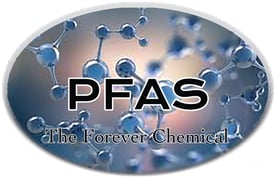 I will explore the potential risks of exposure to two members of a family of man-made chemicals called PFAS. These chemicals are PFOA and PFOS.
I will explore the potential risks of exposure to two members of a family of man-made chemicals called PFAS. These chemicals are PFOA and PFOS.
I will discuss the sources of PFOA and PFOS. These include leaching from industrial sites, the use of consumer products, and food and water contamination.
I will also discuss the exposure pathways of PFOA and PFOS. I will examine the regulations and guidelines for the use of these chemicals. I will also investigate their impact on the environment and various industries.
I will guide how to limit exposure to PFOA and PFOS and protect oneself from potential health risks. Perfluorooctanoic acid (PFOA) and Perfluorooctane sulfonate (PFOS) have been primary environmental safety concerns raised recently. There may be short and long-term health impacts on humans.
This guide covers the potential risks of PFOA and PFOS. It explains their sources and exposure pathways. It also looks at regulations and guidelines for their usage and impact on the environment and industries.
History of PFOA and PFOS Regulation in the US
The EPA launched an investigation into the potential health risks of PFOA and PFOS in the early 2000s. This brought about the regulation of these chemicals in the United States.
In 2006, the Environmental Protection Agency (EPA) agreed with eight major chemical manufacturers. This agreement required them to phase out the production of perfluorooctanoic acid (PFOA) and perfluorooctane sulfonate (PFOS) by 2015. However, these chemicals are still in the environment and risk human health.
Introduction to PFOA and PFOS
PFOA and PFOS are fluorinated organic compounds used in various industrial and consumer applications for decades. PFOA is a synthetic chemical that produces non-stick coatings, stain-resistant fabrics, and water-resistant clothing. PFOS is another synthetic chemical used in firefighting foams, stain-resistant coatings, and cleaning products.
PFOA and PFOS Health Risks
These chemicals have been linked to several health risks, including liver damage, immune system dysfunction, thyroid disease, and cancer. The Environmental Protection Agency (EPA) states that PFOA and PFOS are persistent in the environment. These chemicals can accumulate in the human body and cause adverse health effects.
Sources and Exposure Pathways of PFOA and PFOS
The primary sources of PFOA and PFOS contamination are:
- Industrial releases.
- Consumer impacts from cookware and other products containing these chemicals.
- The disposal of consumer products.
There are many potential risks from exposure to these chemicals created by human ingestion. PFOA and PFOS can be ingested through exposure to cookware.
Examples include the Teflon lining of pots and pans. They can also be ingested through products manufactured directly by drinking water sources. The chemicals can enter the environment through wastewater treatment plants, landfills, and incinerators.
Regulations and Guidelines for PFOA and PFOS
The EPA in the United States has issued health advisories for PFOA and PFOS. They recommend drinking water containing a maximum of 70 parts per trillion (ppt). Additionally, several states have taken action to regulate PFOA and PFOS in consumer products and firefighting foams. The European Union has also banned PFOA and PFOS in consumer products.
Current State of PFOA and PFOS Regulation in the US
Several states have proposed or enacted legislation to regulate PFOA and PFOS in consumer products and firefighting foams. The EPA issued a plan in 2019 to regulate them under the Safe Drinking Water Act. This could lead to enforceable drinking water standards for these chemicals.
Impacts of PFOA and PFOS Regulation on Industry and the Environment
Regulation of PFOA and PFOS has significantly affected industries that use these chemicals. Examples include the manufacturing of non-stick coatings and firefighting foams. However, using alternative chemicals and technologies has led to the developing of safer and more sustainable products. The regulation of PFOA and PFOS has also reduced environmental contamination and improve human health outcomes.
Alternatives to PFOA and PFOS
Several alternatives to these chemicals have been developed, including fluorinated and non-fluorinated. Fluorinated options, such as GenX, have been set to replace PFOA and PFOS in specific applications. Non-fluorinated options, such as silicone-based coatings, have also been designed for non-stick applications.
Companies Providing Solutions
WES Industries Inc. is an expert in water purification and air emission control systems. They design, manufacture, and install these systems in the USA and the Caribbeans.
WES Industries Inc. has been supporting environmental initiatives for 38 years. They have developed environmental treatment systems across the USA with over 272 treatment plants.
WES Industries has a professional design-build team. They can help you with everything from assessment to completion. They guarantee your success.
WES Industries provides technologies to treat and remove PFOA and PFOS from water and wastewater.
These technologies are used in the food and beverage, municipal, industrial, medical, and aquaculture markets.
If you have a water quality issue and need to remove harmful chemicals, contact WES Industries Inc. Our professionals are ready to assist you. WES Industries Inc. can be reached at (941) 371-7617 or www.WESinc.com.
Conclusion and Future Outlook on PFOA and PFOS Regulation
In conclusion, regulating these chemicals is essential to protect human health and the environment. While significant progress has been made in handling these chemicals, much work remains. Developing safer and more sustainable alternatives is crucial to reducing our reliance on PFOA and PFOS. As a society, we must prioritize environmental safety and work towards a more sustainable future.

